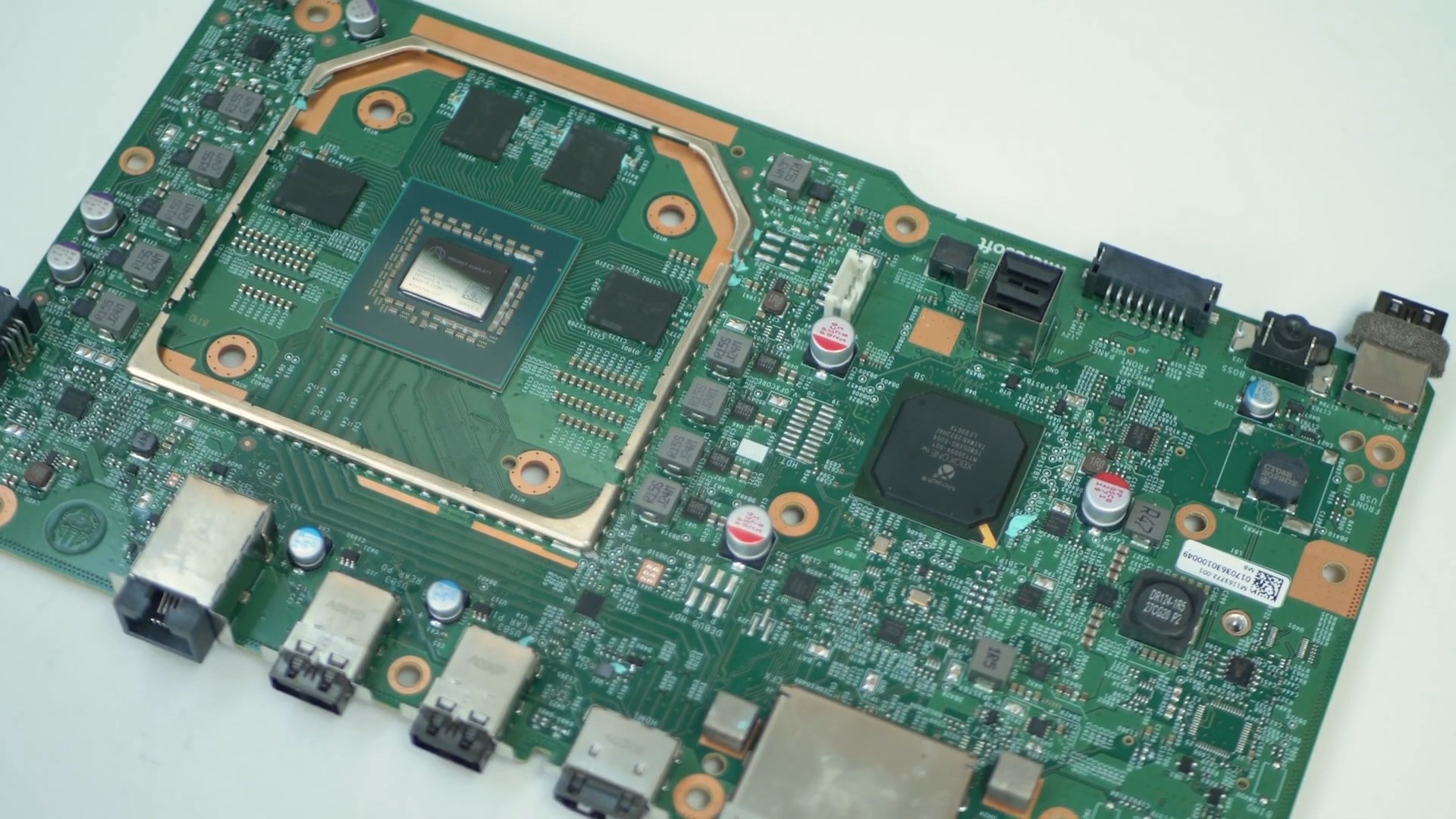Touted by Microsoft as the smallest and sleekest Xbox ever, the Xbox Series S packs some serious firepower inside its 2.7L chassis. Digital Foundry today tore apart the tiny gaming console, revealing what’s hidden inside Microsoft’s creation.
The Xbox Series S flaunts a modular design where each component is properly labeled and easy to replace. For example, the 165W power supply slots into the PCB and doesn’t require any screws. As noted by Digital Foundry, the Xbox Series S pulls around 82.5W at full load, so the 165W unit is more than sufficient capacity to power the entire console.
A custom 7nm AMD SoC with eight Zen 2 CPU cores featuring simultaneous multithreading (SMT) resides at the heart of the Xbox Series X. The chip is clocked at 3.6 GHz but drops to 3.4 GHz when SMT is engaged. The octa-core processor isn’t alone; 10GB of GDDR6 memory keep it company.
The SoC and four surrounding 2GB GDDR6 memory chips employ a custom cooling solution, which consists of a two copper base plates, three copper heat pipes and a low-profile heatsink. Digital Foundry pointed out that the cooler utilizes Microsoft’s characteristic X-clamp, so there’s no way to remove it without causing damage. The remaining 2GB of GDDR6 memory, which is set aside for system memory, resides on the reverse of the PCB.
Image 1 of 4
Image 2 of 4
Image 3 of 4
Image 4 of 4
Even though the Xbox Series X and Series S utilize a similar octa-core AMD SoC, the dimensions vary between the two dies. The silicon for the former checks in at 360mm-squared, while the latter’s die size is 197mm²-squared The reason for the big disparity is that the SoC inside the Xbox Series X comes equipped with more memory controllers and a beefier RDNA 2 graphics engine. For comparison, the Xbox Series X has 52 compute units (CUs), and the Xbox Series S is limited to 20 CUs.
The only user-replaceable component on the Xbox Series S is the SSD. Sadly, owners can’t configure the drive on a software level at the moment. By default, the console comes with a Western Digital SN530 512GB M.2 2230 NVMe SSD with a custom ASIC that upgrades the drive to the PCIe 4.0 standard. However, only two lanes are available for the SSD. Digital Foundry suspects that the remaining two lanes are separated for the external storage memory card.
With the graphics cards shortage, gaming consoles have turned into an extremely attractive alternative for gamers. The Xbox Series S with its $299 price tag is an intriguing option for those on a tight budget.
